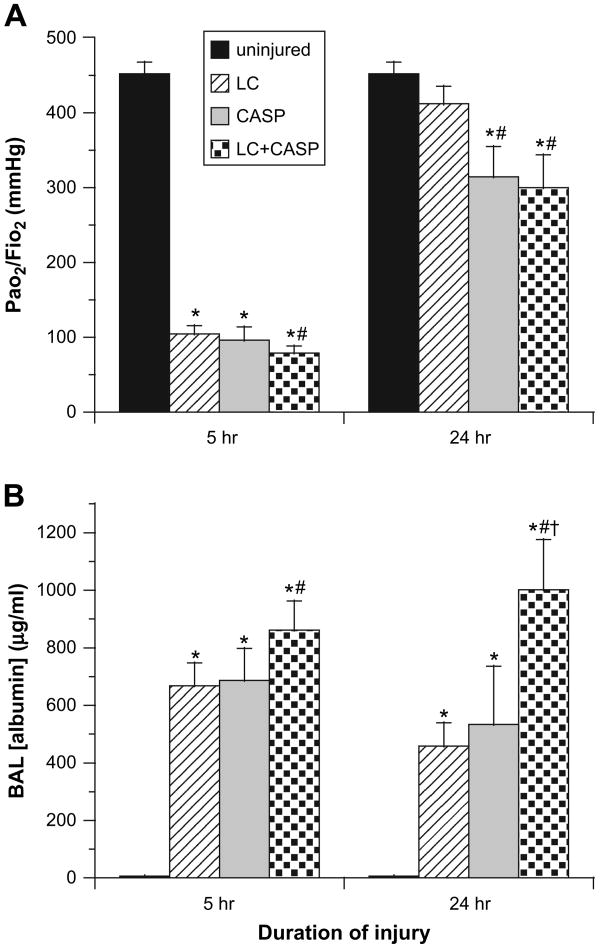Fig. 1.
Assessment of lung function and injury. Rats breathed 98% oxygen (FiO2 = 0.98) for 5 minutes just prior to sacrifice at 5 or 24 hours post-injury with lung contusion (LC), aspiration of combined acid and small gastric particles (CASP), or both (LC + CASP). Arterial blood was drawn and analyzed for the partial pressure of oxygen (PaO2), and albumin concentration was measured in cell-free BAL supernatant by ELISA. (A) Arterial oxygenation expressed as PaO2/FiO2 (mm Hg, mean ± SEM, n = 6–12). (B) Albumin (μg/mL, mean ± SEM, n = 6–11). Kruskal-Wallis (rank sum) statistical analysis was performed on data at each time point, and inter-group comparisons were made with a Bonferroni correction for multiple comparisons such that P < 0.0083 was considered significant (family-wise α error = 0.05). *P < 0.00001 compared with uninjured controls; **P < 0.006 compared with LC alone; ***P < 0.00006 compared with CASP alone.

